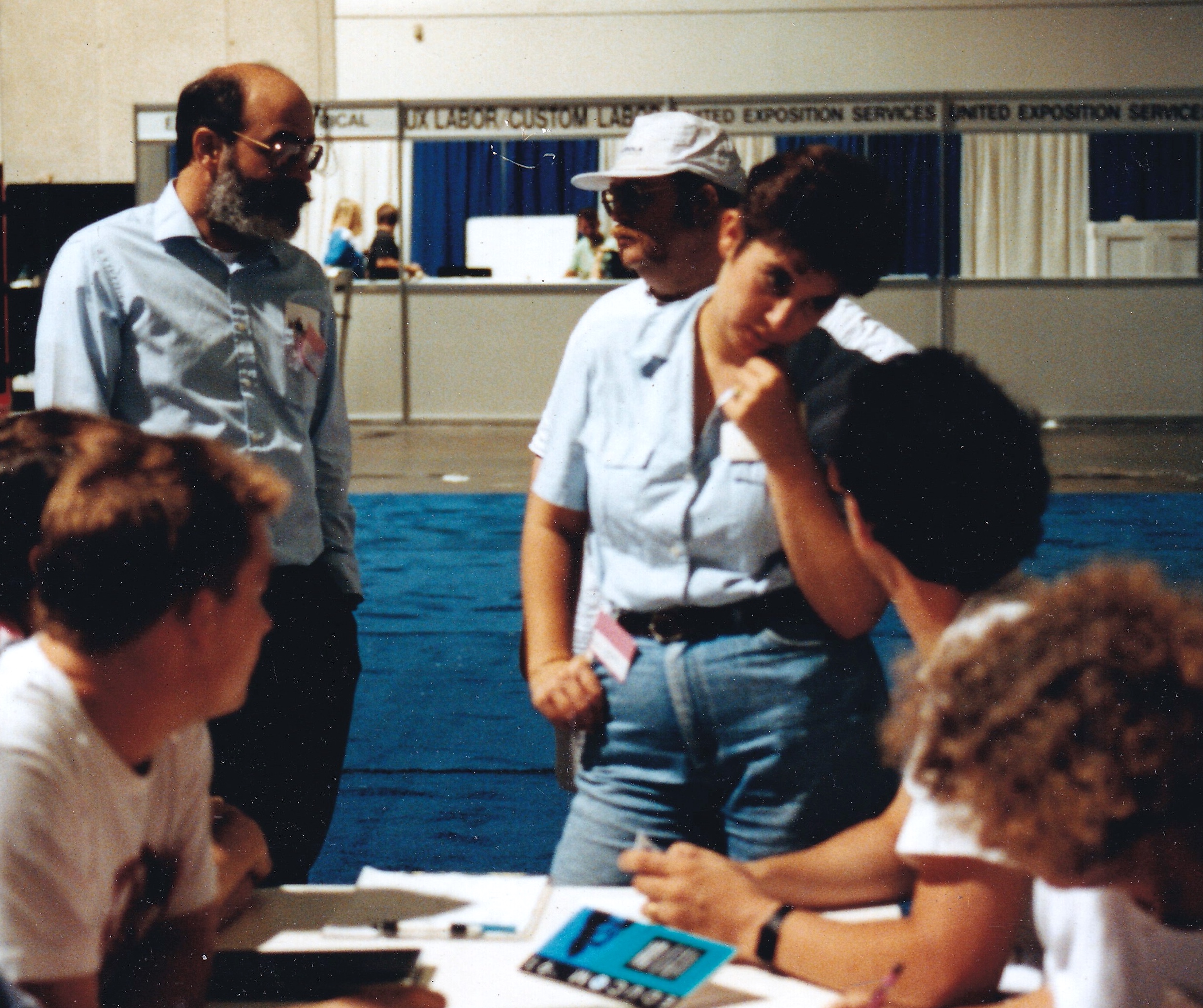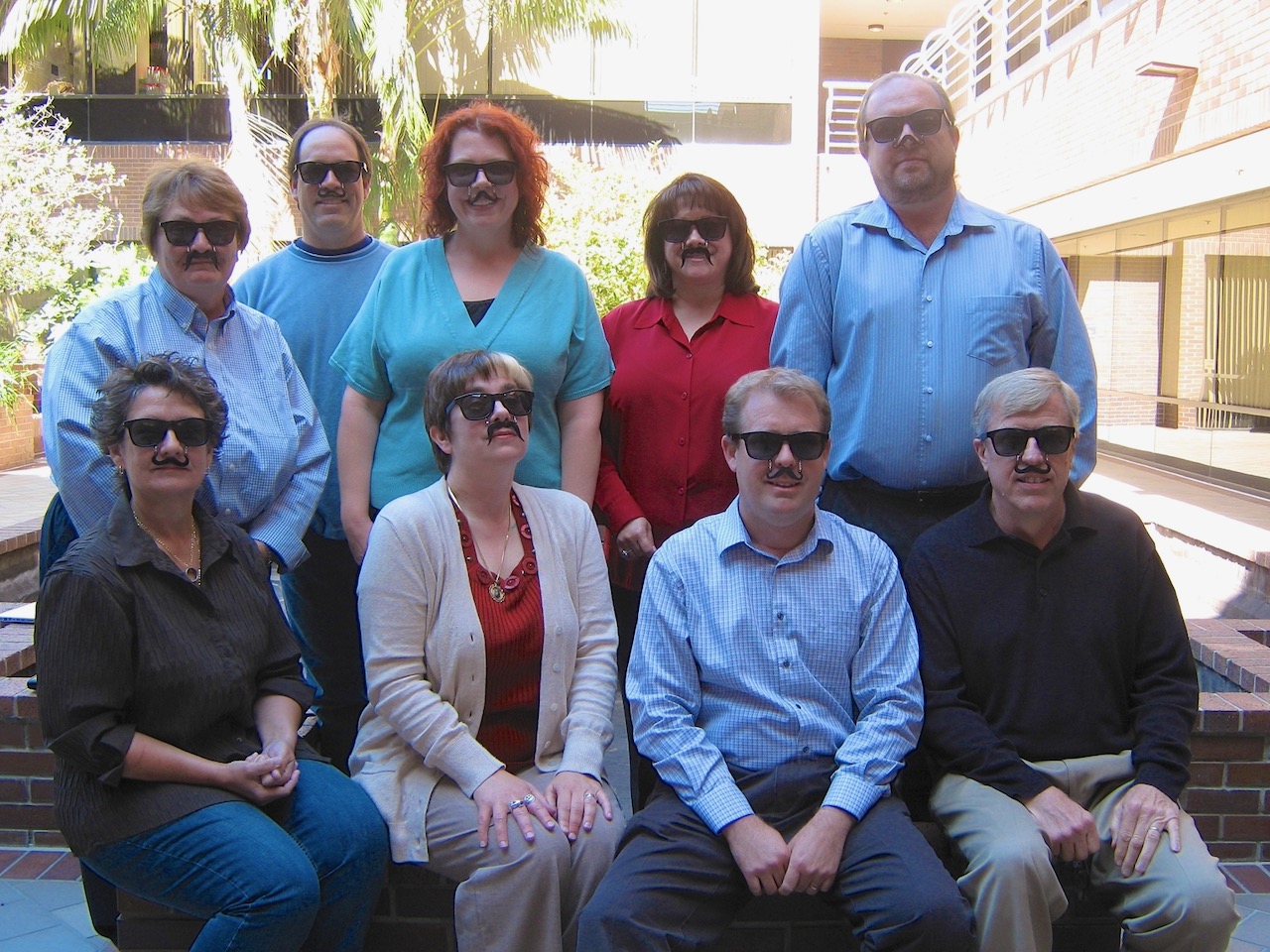Valerie Polichar's Happy Accident
Valerie Polichar wasn’t supposed to attend UC San Diego. But she did, then hung around for more than 40 years.

By Mark Hersberger
This summer, Valerie Polichar will retire from her position as Senior Director, Academic Technology Services, and end an association with UC San Diego that spans over 40 years. If Valerie’s original plan had stuck, she may never have started in the first place.
“I ended up attending UC San Diego by accident,” she recalls with a laugh. After graduating high school in San Diego, Valerie was admitted to two out-of-town universities. However, it wasn’t financially viable to attend either, and Valerie’s parents decided it would be better for her to live at home and attend a local university. They worked through her high school guidance counselor to get her admitted to UC San Diego.
“All of a sudden, here I was,” Valerie recounts. “I came to my orientation completely disoriented.”
Valerie settled in soon enough, thanks in part to getting involved in the campus computing community. She grew up as a “computer nerd,” even writing some adventure game programs in high school. Her very first week at UC San Diego, Valerie discovered the computer center, and started chatting via an early form of instant messaging.
Valerie explains that students had generic usernames — hers was iz69 — but a few users had first names as usernames. “I just started talking to the people with actual names,” Valerie says. “They must be more interesting, right?”
One such person turned out to be her future mentor and colleague, Jim Madden, who started encouraging Valerie’s programming skill progress. “I would go to Jim’s office and ask for something to work on,” Valerie recalls. “He would tell me he needed something and asked if I could write a program for it. And later I realized he didn’t really need it at all. He was just coming up with projects for me to do to help me to learn. And so I probably learned more just working under his mentorship than I did in my programming classes.”
Jim has a slightly different recollection, but likes the idea of it nevertheless. “Valerie was always excited about new technology,” he says. “My guess is, she would take up an idea we had talked about on her own and work on it.”
Four years later, Valerie finally got a student job working for Jim, and earned her degree in Cognitive Psychology in 1987. Next up was a Ph.D. from UC San Diego in (experimental) Psychology. “I always thought I would be a researcher,” Valerie says. “But I wasn’t very engaged in the work I was doing. Meanwhile, through most of grad school, I was working in a job I absolutely loved — for Network Operations. I had become a supervisor and realized I really loved management.”
After completing the Ph.D. in 1993, Valerie faced a choice between working as a postdoc at UCLA or staying on at UC San Diego in a job she adored — for double the salary. “It was no contest,” she said of her decision to remain at UC San Diego.
In those early years, Jim recalls a true sense of family within the nascent campus tech community. Oftentimes, Jim’s wife and young kids would come to pick him up, and hang around AP&M while he finished work. “Valerie would play games with them, or take them outside to play,” he remembers. “She really had a good sense of humor about many things. I remember her as an important part of my sons’ early life as they were waiting around for me.”
Nurturing the Network
While completing her degrees, Valerie did a bit of everything, including writing and designing UNIX documentation, editing a computing newsletter, and assisting users with email.
One responsibility included handling billing, or at least trying to, for some 2,500 local area network connections. When an academic network was first installed at UC San Diego in the mid-1980s, the decision was made to charge the people who had network connections in their offices.
“But we didn’t know exactly who those people were, only the office locations where ports were installed,” Valerie recalls. “So for about a year, I walked the campus, building to building, door to door, to find the people with network connections and collect their billing information. I actually wore out a pair of shoes — the sole came completely off.”
In 1989, Valerie became Manager of Network Support Services. By the late 1990s, an effort arose to more effectively fund UC San Diego’s voice and data network in the form of the Next Generation Network project. At the time, the landscape was very inequitable. Some departments managed to pay less for more networking. Some areas had sub-par bandwidth, and the campus Internet connection was very constricted. The infrastructure at UC San Diego was old and needed many upgrades, but there was no sustained funding to bring it up to date and keep it competitive for growing academic and administrative needs.
Valerie worked alongside Jim, Sheryl Gerbracht, and others, to establish the financial model. Over the course of three years Sheryl and Valerie delivered dozens of presentations and conducted countless meetings with administrators, department heads, and faculty.
Sheryl, who is currently Senior Director of the IT Business Office (and also retiring this summer), was new at the time, and reflects, “A large part of my learning when I came here was learning from Valerie — not only about the network but about other aspects of UC San Diego as well.”
Sheryl continues, “The thing about Valerie is, she’s so multifaceted. She was good for NGN because she has very deep knowledge about networking, but could also connect with faculty and researchers.”
In summarizing NGN’s formation, Jim says, “I would say that Valerie was as important as anyone in getting NGN established, and convincing members of the academic community to support the idea of a campuswide service providing equitable communications access. Valerie, along with Sheryl and others, really solidified the idea that UC San Diego should provide those services to the entire campus community and not restrict them to departments who had their own money to build things. They got people excited about the process and that’s a real accomplishment.”
NGN came online in 2001. It has served as a blueprint for other universities, and the funding model established way back then is still in place today.
Aligning Academic Computing
After NGN’s launch, Valerie continued working as a network team supervisor, then was moved to a more coordinative role in the network team when Network Operations was absorbed by the former Administrative Computing and Telecommunications (ACT) department.
Around 2009, she started on the path to her current role. Volunteers were needed for a research cyberinfrastructure project. Valerie was a good fit, as she was comfortable talking with faculty members. She eventually became chair of the committee, then co-led Larry Smarr’s Integrated Digital Infrastructure project, and then was appointed Director of the brand-new Research IT Services in 2016.
When she assumed the role of managing the entirety of academic technology operations, it fulfilled a career-long goal. “Even as a young adult, I knew I wanted to work in a management role,” she remembers. “By my late 20s, I thought to myself, ‘I’d like to be in charge of academic computing.’ There were some career detours along the way, but somehow I persisted and ended up with the role I’d always wanted.”
Dan Suchy, Director of Educational Technology Services, has known Valerie for several years, and reported to her for the past seven years. He’s witnessed firsthand how and why she thrives in the role. “Valerie knows so many people in the research and instructional fields,” he explains. “Everybody knows Valerie and I’ve yet to find one of those people who doesn’t like Valerie.”
Dan notes the respect she garners from faculty and researchers. He marvels at Valerie’s ability to seamlessly transition from esoteric discussions with Nobel Prize-winning researchers to a deeply technical discussion with a staff member. “Valerie is a great example of how you can work with the academic community and staff in a way that brings harmony and makes sense.”
Lasting Legacy
“Valerie has all the technical knowledge, but is also very much a people-centered person,” notes Sheryl. “One of the things I really like about Valerie is her communications ability. People may not know this, but she’s a certified mediator, so she can step into certain conversations and mediate them very, very well. And that’s a great skill. She is also a top notch writer and I often have asked for her input on important communications coming from my office and she is always willing to help.”
Dan adds, “Valerie leads with compassion, sensitivity, and a display of emotional intelligence that I think is rare.” He recalls the onset of COVID-19, and how Valerie prioritized checking in on people’s well being and did her best to bring people together virtually.
There’s a lighter side, too. “Honestly, she cracks me up!” Dan says. “She has a great sense of humor — offbeat and quirky. I’m going to miss that a lot. I also think it helps her relate to people.”
Jim cites Valerie’s many hobbies as crucial in helping her connect with people. “Valerie is interested in everything,” he says. “She plays music. She writes. She goes birding. She’s excited about all those things, and that obviously helps her talk to almost anybody.”
Jim goes on to stress the importance of Valerie’s contributions, from the early days of UC San Diego technology to now. “Valerie is one of the threads that keeps it together,” he remarks. “She’s always had the people of UC San Diego in mind over these 40 years, and that’s one of the things that makes her a good person and has made our campus a good place.”
Valerie is quick to point out that, in her mind, she’s not retiring — simply moving on from UC San Diego. She says she’ll stay involved in the academic technology field at both the national and international levels. She’s not one to look back, only forward, already excited about articles and books she plans to write.
“Life is short and there’s a lot to do,” Valerie says. “I’m very much a ‘looking forward to the next thing’ person. It’s been a great career. I’ve met a million people and it’s been an honor to be part of our mission of instruction and research, which to me is still absolutely critical and important.”
 |
| Circa 1991: That’s Jim Madden with the beard, Valerie in the jeans, and Brian Kantor behind her. The UC San Diego network team was installing the first computer network at the San Diego Convention Center and Marriott hotel. |
| Network Operations circa 1999 (from left): Parrish Nnambi, Pasha Sadri, Mike Barboni, Erik Strahm, Jim Gibson, Valerie Polichar, Jim Madden, Fran Bumpus, Crys Harris, unknown, Chris Sokolov. If you remember the person in the hat, let us know! |
| Network Operations 2001 (from left): Mindy Nnambi, Parrish Nambi, Michelle Trieu, Nguyen Trieu, Janice Gabriel, Valerie Polichar |
 |
| ITI Management Team in disguise 2012 (top row from left): Charlotte Klock, Dave Rapp, Jessica Hilt, Becky Spili, John Denune (bottom from left): Beverly Oregon, Valerie Polichar, Erik Strahm, Don McLaughlin |
 |
| From 1996: Valerie’s sketch of UC San Diego network connections. |